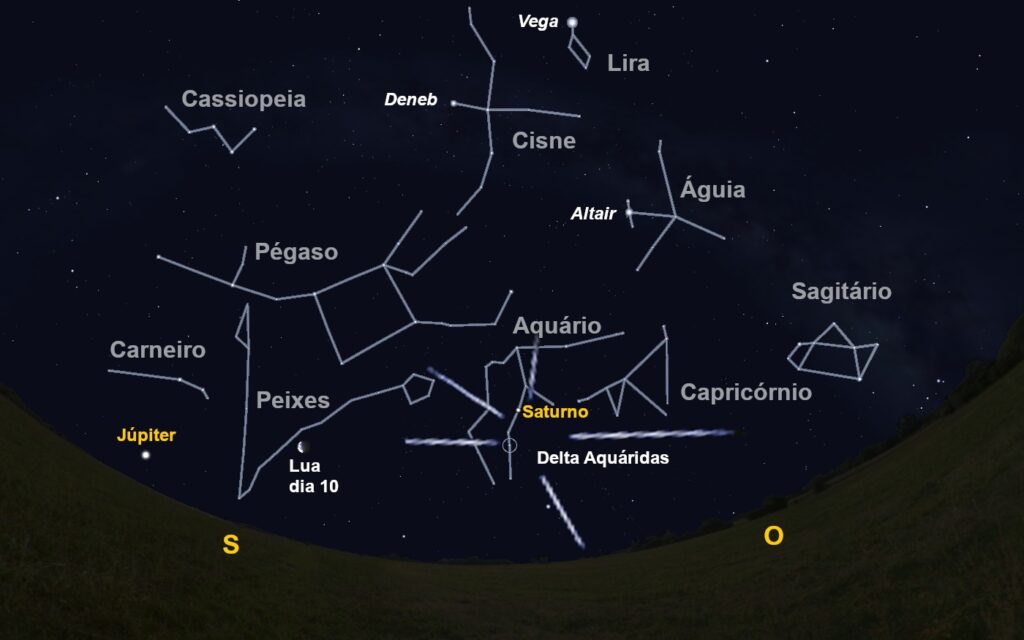The superior conjunction of Mercury (positioning of this planet beyond the Sun) signaled the first dawn of this month. On the same day, the moment of greatest apparent approximation (apulse) between the planets Venus and Mars took place. These stars were seen in the west at dusk that day, at the same time that the Moon appeared in the southeast next to the constellation of Scorpio.
Day 1 marked the 30th anniversary of the first observations of the comet. Shoemaker–Levy 9 by the Hubble Space Telescope. This was a comet that had broken up when passing too close to Jupiter in the previous year, and whose planet would collide a year later, being the first collision with a planet in the solar system (other than Earth) that we observe.
Yesterday, the 3rd, there was a full moon. Since this ephemeris happens a day and a half before the arrival of the Moon at its perigee (point of the orbit closest to the Earth), the Moon seemed a little bigger than usual: it was the famous full supermoon.
Around 20 pm on the 6th, the Earth reaches its aphelion, the point in its orbit farthest from the Sun (distance 1.0167 astronomical units). But, as at this time of the year our hemisphere is facing the Sun, it ends up receiving more solar radiation than when it is closest to the Sun.
Five hours after this ephemeris, the Moon will rise next to the planet Saturn, which, for these days, is in the constellation of Aquarius.
On this same day, the 7th marks the 20th anniversary of the launch of the rover Mars Explorer Rover-B (also known as Opportunity) by NASA from its base at Cape Canaveral. For 14 years and 4 months, this mission helped us to get to know the planet Mars better.
A day later, it will be the 90th anniversary of publication in the magazine. Nature the discovery, by Karl Jansky, of radio waves emanating from the direction of the center of our galaxy. For this and other works in this field, Jansky is called the father of radio astronomy, which is why there is a unit of radio radiation flux per unit surface named after him (the jansky), as well as a crater on the eastern edge of the Moon.
The fourth quarter will occur at dawn on the 10th. On this same day, Mars will come closest to Regulus, the heart of the constellation Leo. Two dawns later, we will watch the birth of the Moon next to the planet Jupiter.
On the 17th, the New Moon will take place. This is why we will only see our natural satellite again in the late afternoon of the 19th, when it is setting next to Mercury.
The first quarter will coincide with the last Tuesday of the month. Two days later, the closest approach between the planets Mercury and Venus will take place.
During the second half of the month, some shooting stars will appear, which will appear to come from the vicinity of the Delta star in the constellation of Aquarius.
These meteors will form part of the Delta-Aquarid star shower, whose peak of activity takes place at dawn on the 28th. Unfortunately, even under ideal observation conditions, this peak never exceeds twenty meteors per hour.

Good remarks!



















Comments